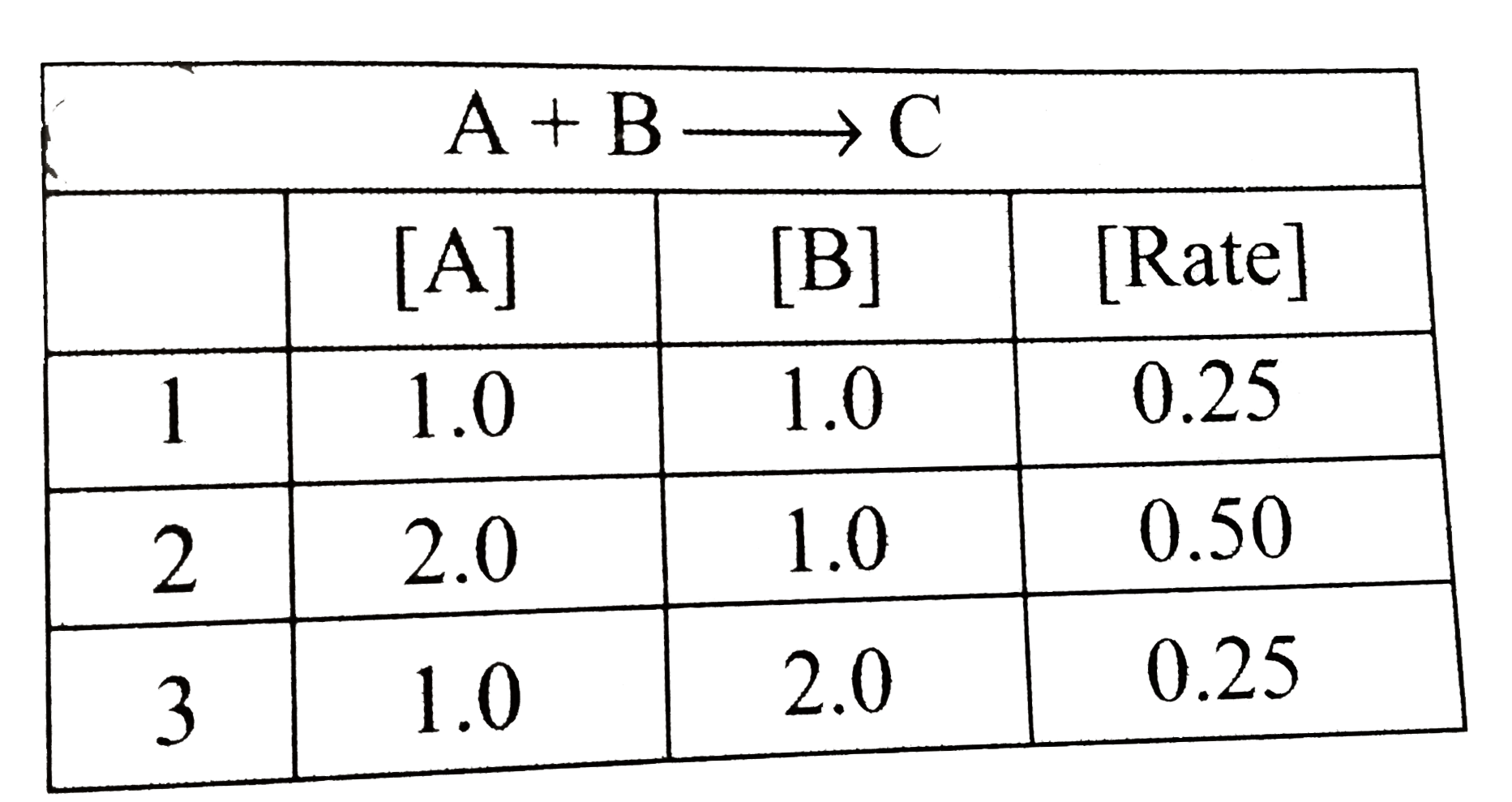Observe the following reaction:
2A+B→C
The rate of formation of C is 2.2×103 mol L−1−1min.What is the value −d(A)dt(in molL−1min−1)Solution in Telugu
2.2×10−3
1.1×10−3
4.4×10−3
5.5×10−3
The correct Answer is:C
Step by step video, text & image solution for Observe the following reaction:2A + B to C The rate of formation of C is 2.2xx10^(3) mol L^(-1) min^(-1).What is the value - (d(A))/(dt) ("in "mol L^(-1) mi n^(-1)) by Chemistry experts to help you in doubts & scoring excellent marks in Class 12 exams.
Updated on:21/07/2023Topper's Solved these Questions
- CHEMICAL KINETICSBOOK - AAKASH SERIESCHAPTER - CHEMICAL KINETICSEXERCISE - Example
32 Videos
- CHEMICAL KINETICSBOOK - AAKASH SERIESCHAPTER - CHEMICAL KINETICSEXERCISE - Subjective Exercise-I(Long answer question)
1 Video
- CHEMICAL KINETICSBOOK - AAKASH SERIESCHAPTER - CHEMICAL KINETICSEXERCISE - OBJECTIVE EXERCISE - 2 (Order, molecularity, Half life)
38 Videos
- CHEMICAL KINETCSBOOK - AAKASH SERIESCHAPTER - CHEMICAL KINETCSEXERCISE - EXERCISE - 3.2
45 Videos
- CHEMICAL THERMODYNAMICSBOOK - AAKASH SERIESCHAPTER - CHEMICAL THERMODYNAMICSEXERCISE - Additional Practice Exercise
54 Videos
Similar Questions
Formation of water from its elements is spontaneous, but is slow. Comment .
View SolutionDefine rate of chemical reaction and explain the factors that effect the rate of reaction.
View SolutionSucrose decompose in acid solution into glucose and fructose according to the first order rate law, with t12=3.00 hours. What fraction of sample of sucrose remains after 8 hours ?
View SolutionDiscuss on the kinetic spontaneity of a chemical reaction. Is a slow reaction spontaneous? Why?
View SolutionWhich among the following is not an exact differential?
View SolutionFor the following reaction: 2A + B +C rarr A_(2)B + C The rate law has been determined to be Rate = k[A][B]^(2) with k = 2.0 xx 10^(-6) mol^(-2) L^(2) s^(-1) For this reaction, determine the initial rate of the reaction with [A] = 0.1 mol L^(-1), [B] = 0.2 mol L^(-1), C = 0.8 mo, L^(-1) . Determine the rate after 0.04 mol L^(-1) of A has reacted.
View SolutionThe activation energy of the reaction: A + B rarr Products is 105.73 kJ mol^(-1) . At 40^(@)C , the Products are found at the rate of 0.133 mol L^(-1) min^(-1) . What will be the rate of formation of Products at 80^(@)C ?
View Solution
Rate is expressed in molL−1−1min.
In the above reaction, the order is
View SolutionObserve the following reaction
2A+B→C
The rate of formation of C is 2.2×10−3mol L−1min−1. What is the value of −d[A]dt(in mol L−1min−1) ?
View SolutionFor the reaction 2A+BrarrC , the rate of formation of C is 0.5 "mol" L^(-1)hr^(-1) . What is the rate of disappearance of A and b?
View SolutionFor the reaction : 2A+B+CtoA_(2)B+C, the rate law has been determined to be Rate =k[A][B]^(2)" with "k=2.0xx10^(-6)" mol"^(-2)L^(2)s^(1) For this reaction determine the initial rate of the reaction with [A]=0.1" mol L"^(-1),[B]=0.2" mol L"^(-1),[C]=0.8" mol L"^(-1). Determine the rate after 0.04" mol L"^(-1) . Determine the rate after 0.04 "mol L"^(-1) of A has reacted.
View SolutionObserve the following reaction: 2A + B to C The rate of formation of C is 2.2xx10^(3) mol L^(-1) min^(-1) .What is the value - (d(A))/(dt) ("in "mol L^(-1) mi n^(-1))
View SolutionOne mole of A (g) is heated to 200∘ C in a one litre closed flask, till the following equilibrium is reached.
A(g)↔B(g)
The rate of forward reaction, at equilibrium, is 0.02 molL−1min−1. What is the rate (in molL−1min−1) of the backward reaction at equilibrium?
View SolutionA+ 2B rarr C+D." If "-(d[A])/(dt)=5xx10^(-4)" mol L"^(-1) s^(-1)," then "-(d[B])/(dt) is :
View SolutionObserve the following reaction, 2A+B→C The rate of formation of C is 2.2×10−3 M m in−1. What is the value of −d[A]dt(in moL−1 m in −1) ?
View Solution